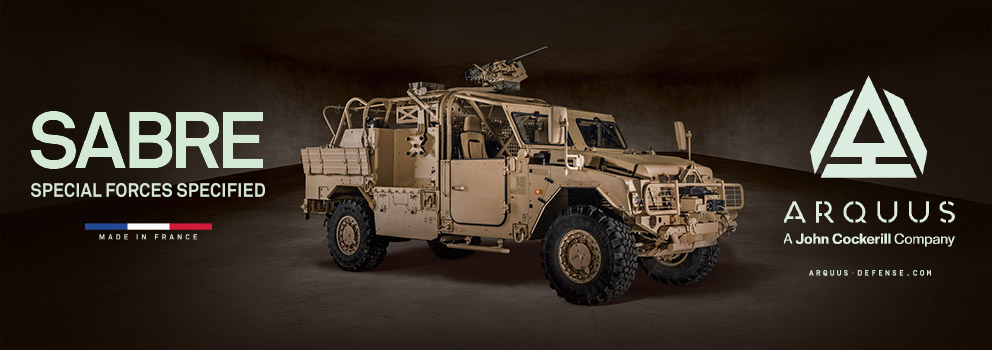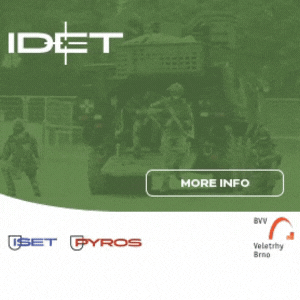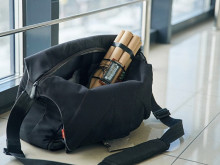Significant current and future projects of VR Group
Our editorial team had the opportunity to visit the Brno-based VR Group, a subsidiary of the state enterprise LOM PRAHA, which is engaged in the development and production of simulation systems. The company, which holds a "SECRET" classification certificate and is licensed to trade in military material, was founded in 1998 and primarily focuses on simulation technologies and simulation systems. Among other things, VR Group is a long-standing partner of the Czech Army, where it supplies its technologies. The company has been successful in the long term and has good prospects for the future, when it will participate in major contracts for the Czech Army.
Video: Significant current and future projects of VR Group / CZ DEFENCE
As already mentioned, VR Group is a subsidiary of the state enterprise LOM PRAHA, whose founder is the Ministry of Defence of the Czech Republic. Its product portfolio can be divided into three basic groups, namely the flight simulator department, the ground simulator department and the live simulation department, which focuses on the production of systems for training in marksmanship.
VR Group is a major supplier of simulation technologies to the Czech Army, for which it has, for example, subcontracted and operated the AH-1Z Viper attack helicopter simulator in cooperation with the American manufacturer Bell within the new H-1 simulation centre located at the 22nd Helicopter Air Base in Náměšt' nad Oslavou. It has also integrated and helped to build simulation centres in Brno and Vyškov and simulation centres in Čáslav for L-159 aircraft. Finally, the tactical simulation centre for LOM PRAHA s.p. or the tactical solution for helicopter training in HTP Ostrava are examples of deliveries that were not directly for the Czech Armed Forces, but are mainly used by the Czech Armed Forces.
VR Group is also a future supplier of a complete training system for CV90 armoured fighting vehicles, which our army has chosen as new tracked infantry fighting vehicles. In cooperation with Aero Vodochody Aerospace, it will also deliver a synthetic ground training solution for the L-39NG aircraft ordered by the Centre for Aviation Training (CLV) in Pardubice as part of the training of future pilots of the Czech Air Force.
Flight simulators not only for the Czech Armed Forces
According to Vít Ryška, Chairman of the Board of Directors of VR Group, the company has three projects in the pipeline regarding the L-39NG simulator. One is in the installation phase in Vietnam, the second is in the production phase for a Hungarian customer, and the third is a simulation solution for the state-owned company LOM PRAHA or for their CLV division. This will be delivered at the end of 2024 and consists of one so-called Full Mission L-39NG simulator. In addition, Vít Ryška sees considerable room for further development within the cooperation on the L-39NG simulation solution for CLV. The role of the simulator is simply irreplaceable in training, both in terms of lower financial costs compared to piloting real aircraft, but also mainly because it is generally possible to train on simulators in situations that are basically impossible to implement in real space with a real aircraft.
During our visit to VR Group, we were able to see the above-mentioned simulator for the L-39NG aircraft with our own eyes. Specifically, it was a simulator intended for a Hungarian customer, namely the Hungarian Air Force, which ordered 12 L-39NG light jet aircraft from Aero Vodochody Aerospace in 2022 and needs to provide synthetic training (training on simulators). Hungary has therefore ordered a Full Mission L-39NG simulator, which will be certified by the Czech Military Aviation Department and subsequently by the Hungarian Military Aviation Department as a Flight Training Device Level 2 (FTD Level 2) according to EASA regulations. On this simulator it is possible to perform basically all tasks as on a real aircraft. In addition, the Hungarians will receive 2 CPT (Cockpit Procedures Trainer) L-39 simulators, which are primarily designed for training standard and emergency procedures and for controlling cockpit systems. Also included in the delivery are 4 Desktop Tactical Trainer (DTT) simulators, which are used for basic familiarization with the aircraft and its functions, and are equipped with a virtual reality set.

Since the Full Mission L-39NG simulator (including the multimedia classroom) will also be delivered for future training of Czech pilots, we asked Technical Director Ivo Gamba and Graphics and Visualization Manager Tomáš Skácel for more detailed information about this complex simulator, which VR Group supplies to its customers on a turnkey basis (hardware, software and training).
We learned that the Full Mission L-39NG simulator is a maximum fidelity simulator that allows almost all training as if the pilot was sitting directly in the real aircraft. The simulator consists of a cockpit, an instructor's station, and a projection system consisting of a projection dome with a 300-degree horizontal viewing angle. Eight pieces of 4K laser projectors are used to illuminate this dome (VR Group can also produce a projection with a 180-degree viewing angle, using 5-6 projectors). The cockpit of the simulator is a completely faithful replica of the real L-39NG aircraft and all controls, their functionality and layout exactly match the real aircraft. It is not only about the functionality of the elements themselves, but also about the physical sensation. This means that the force to press or toggle the individual buttons/levers corresponds completely to reality.
An important element is the load system, which simulates the real forces in the controls, depending on which flight mode the aircraft is currently in within the simulation. In practice, this means that if the aircraft is flying at minimum speed, the forces to the control stick are small. However, if the pilot is, for example, performing combat manoeuvres or aerobatics, the control stick then produces the same drag as in a real aircraft.

The Full Mission L-39NG simulator uses the same software that is used in the real aircraft. These are the Head up display software, the MFD display software and the control panel software, the Universal Management Unit. Thus, the software has identical functions and produces identical graphical outputs that are identical to the real aircraft, which is a great benefit to the pilot.
Before the actual delivery to the customer, which in the case of the Full Mission L-39NG simulator takes 18 months (CPT simulators take up to nine months to deliver and DTT simulators can be delivered by VR Group in about six months), the simulator undergoes certification, after which the flight hours on the simulator are counted as official flight hours for the pilot.
The training on the simulator itself is provided by the customer through its own instructors, but the initial training of the operators (operators and instructors) so that they can operate the simulator successfully and, if necessary, solve any problems that arise, is provided by VR Group as part of the delivery. The training is carried out in-house at VR Group before the system is installed at the customer's site. In fact, before the actual delivery to the customer, so-called company tests are usually carried out, in which the end user verifies at VR Group's premises that what they have ordered will actually be delivered and installed. In order to be able to assess the functionality of the simulator, the customer must first be trained in its operation. This training usually takes two weeks for both groups (operator and instructor). After these steps, the system is taken to the customer and installed, and the customer is then supervised for approximately one week to ensure that he is able to use the new system independently. In addition to consulting during the warranty period (usually 1 to 2 years), VR Group also provides the customer with the option of further updates and keeping the system running optimally (standard lifetime of simulators is 20 years) under a service contract.
The solution also includes, of course, the supply of a software environment in the form of a faithful field database in which the pilots operate within the simulator. According to Tomáš Skácel, the actual creation of the terrain, or rather the terrain database, is indeed a difficult task, because in practice it means processing a huge amount of geographical data.
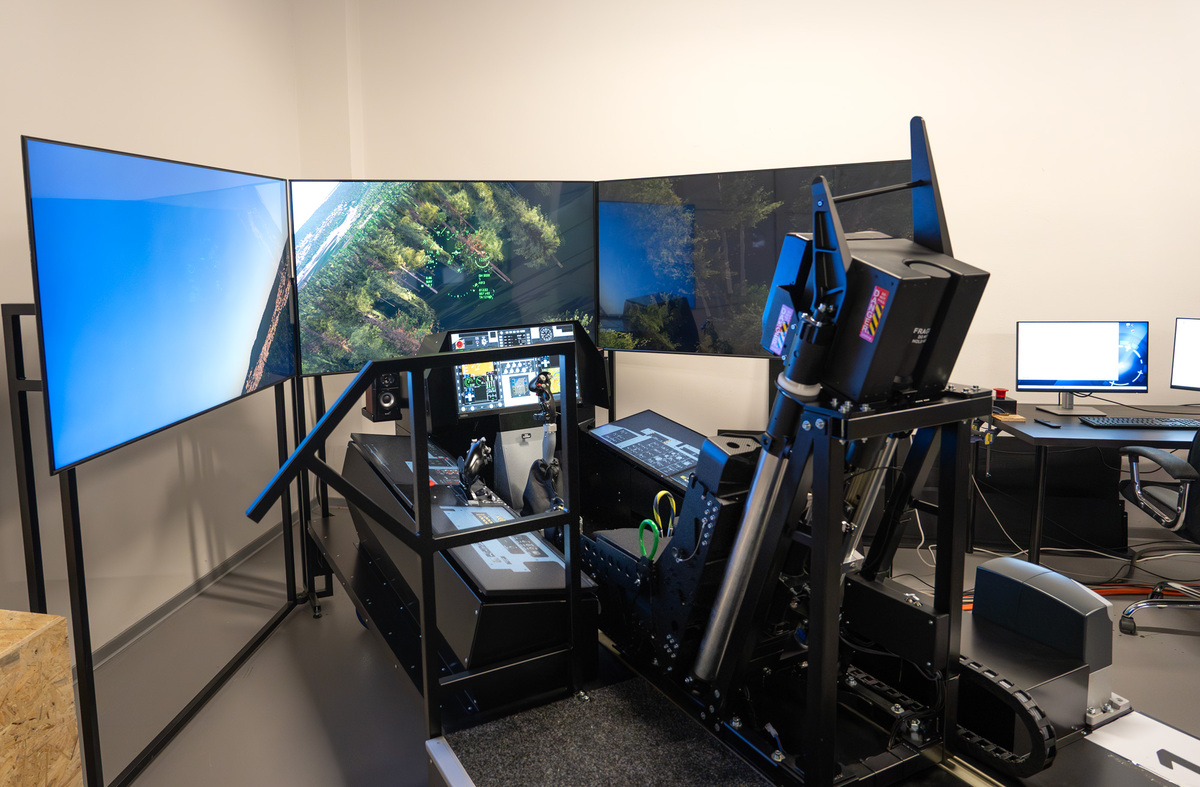
The final product - the field database - must correlate with data from many sources. It is not just about the visual aspect of the terrain database, but if a pilot sets up navigation elements in the cockpit to lead him to the threshold of the runway and follows them in the simulation, he must actually reach his destination safely, or have a precise direction.
As already mentioned, the terrain database is created by processing geographic data, which is often obtained directly from the customer. If the customer does not have this data, VR Group graphic designers can also use freely available sources to create the database. Aerial or satellite images, elevation data, vector data with floor plans of buildings, forests, vegetation and water bodies are the basis. Thanks to sophisticated tools, the individual objects (not only important landmarks) in the terrain database are modelled (in the vast majority automatically) very realistically and their location is absolutely accurate. Once this data is processed, the process of producing the entire terrain database is followed by the processing of many terabytes of data, which is very time consuming. The entire process of producing a field database can take up to half a year from the creation of the order, through the acquisition and processing of the data, to deployment at the customer's site.
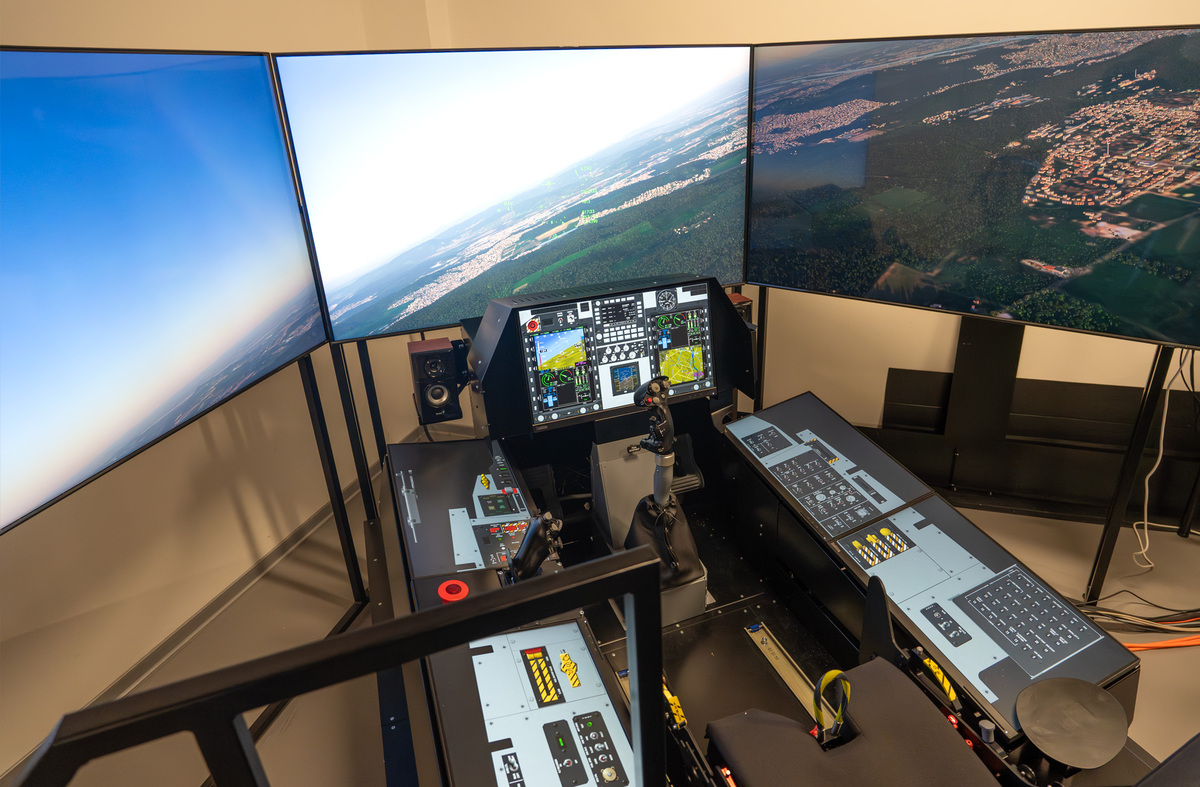
We were wondering why the simulation cabin does not move during training as it does in e.g. civil/traffic aircraft simulators. The explanation is simple. The flight envelope (pitch, roll, yaw and sink angles) of civil aircraft is relatively small and a moving simulation cockpit can thus convey to the pilot a perception similar to what happens in the real environment. However, the flight envelope of a jet light combat aircraft, not to mention e.g. Gripen or F-35 aircraft, is much larger and a moving simulator platform would thus be directly counterproductive as it would transmit insufficient to undesirable sensations to the pilot.
Pilots can train on the simulator individually (where they usually learn basic machine control, various standard and emergency situations in a kick, etc.) or they can train together in more complex situations such as group combat.
VR Group can connect individual simulators using a standardised communication protocol and thus conduct collective training on them, even across types of simulators. Not only the terrain database, but also the complete software is identical across all simulator types (Full Mission, CPT or DTT) and throughout the entire training system (terrain database, image generator, but also simulation of all on-board systems, weapons, etc.). This means that the pilot gets the same realistic simulation on each type of equipment and the individual equipment differs only in the pilot-machine interface.
The CPT simulator has the same precise placement of all controls as the Full Mission L-39NG simulator. It also has all the controls and their placement as the real L-39NG aircraft (the control stick and engine control stick are exact replicas)) and is equipped with a load system that simulates the steering forces to be identical.
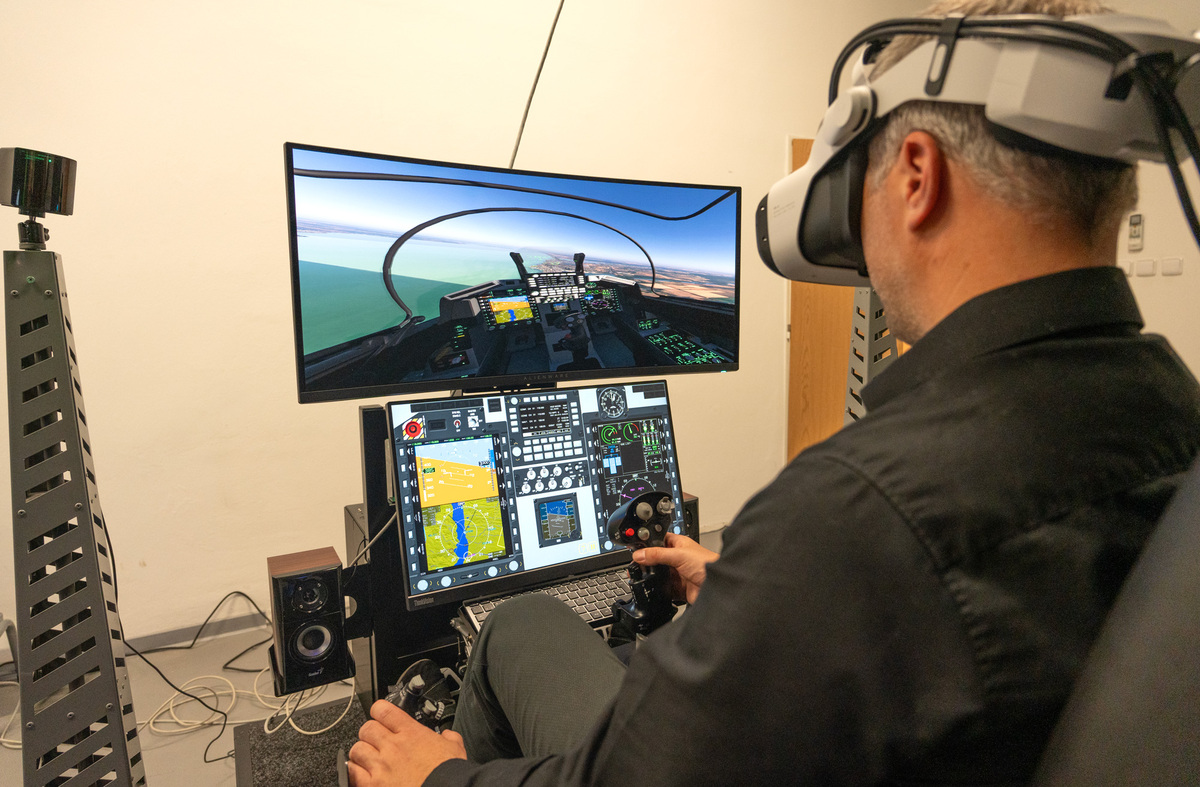
The simplest type of simulator that VR Group produces is the so-called desktop simulator. It is again equipped with an exact replica of the control stick and engine control lever as a real aircraft, but it does not have a load system. This means that the controls are greatly simplified on this simulator. The desktop simulator is equipped with two displays. The lower screen displays the instrument panel and side tables, and the upper display shows the surrounding landscape and the viewport. This kind of simulator is equipped with the Varjo XR-4 virtual headset, which is the best that can be purchased on the market today, and the trainee can choose whether to use the virtual headset for training tasks suitable for virtual reality or whether they prefer to use the standard displays for training tasks that are not suitable for virtual reality.
The biggest benefit of the desktop simulator is the fact that the user gets a complete simulation of all on-board systems as in a real aircraft for a fraction of the cost of a CPT or Full Mission simulator. And because the L-39NG, like most modern aircraft, has a very sophisticated on-board system in terms of navigation, system controls, weapons controls, etc., the trainee can use this very simple simulator to learn how to operate the navigation pages, plan a flight, or figure out how the multi-function displays work in flight. Thus, much of the trainee's time in the simulator can be spent essentially self-study without the presence of an instructor.
All three types of simulators (Full Mission, CPT and desktop simulator) together form a training concept that has been worked on for many years at VR Group. The aim of this concept is to appropriately layer the different types of training between the given simulator types with different levels of sophistication. However, if a customer purchases, for example, only two or three real aircraft, then it does not make sense for them to purchase a whole complex of simulators (including challenging ones) and instead choose simpler simulators that do a very good job for a low purchase price.
If necessary, the above mentioned 3 basic types of flight simulators can be further combined, e.g. in the sense of combining the cockpit of the Full Mission simulator with the visualization of the CPT simulator, which is one of the possible requirements of the Flight Training Centre within the framework of the possible expansion of the L-39NG simulator portfolio. This combination will give the customer a completely realistic environment in which the pilot can operate in a replica of a real cockpit and at the same time save quite considerable funds for very expensive projection by running the simulation on only three screens instead of a costly projection dome.
As far as the certification of flight simulators is concerned, VR Group cooperates with the Department of Military Aviation of the Ministry of Defence of the Czech Republic. The future Full Mission L-39NG simulator for CLV or LOM PRAHA will be properly certified by this department, which in practice means that it will be possible to transfer part of the training from the air to the ground.
Training system for BVP CV90
VR Group will not only supply our army with new flight simulators, but will also deliver a complete training system for the CV90 tracked infantry fighting vehicles, which will enter service in the Czech Armed Forces in 2026.
According to the Chairman of the Board of Directors of VR Group Vít Ryska, this is one of the most interesting projects, together with the simulator for the L-39NG. The contract with the CV90 manufacturer, BAE Systems Hägglunds, regarding mutual cooperation was signed last May. The project is now at the stage of preparing the design documentation, after which the simulation systems will go into production. There are several types of simulators, namely driving simulators, shooting simulators and crew simulators. A solution for tactical training using existing VS2 reconfigurable simulators is also an integral part of the project. One of the most important parts of the project is the integration of the entire CV90 training solution into the existing Czech Army simulation solution.
Currently, VR Group, together with the Swedish CV90 supplier and representatives of the Czech Army, has already agreed on the specific design and functional characteristics of the driving, shooting and crew simulator.
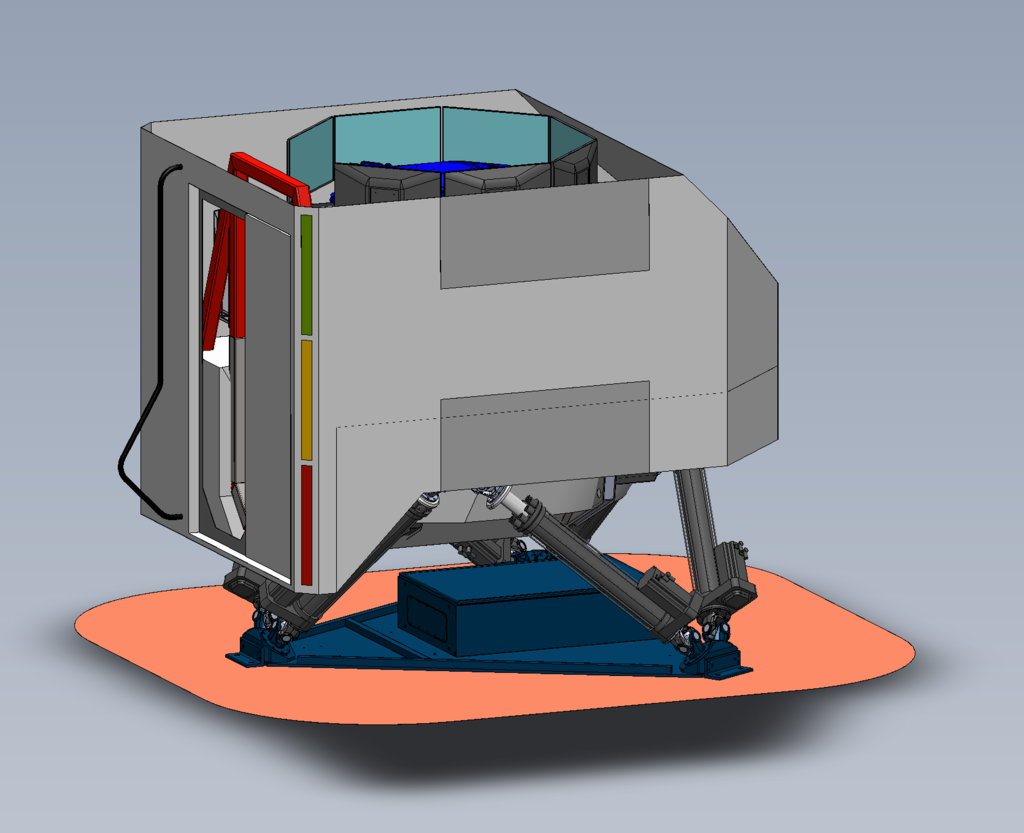
VR Group is one of the first companies in the world to develop a simulation system for the MkIV variant. As part of an industrial cooperation with BAE Systems Hägglunds, the possibility of supplying the simulation solution to other users of the CV90 MkIV is also under discussion.
Staffing
We also asked about VR Group's current staffing and staffing levels. "In terms of staffing, we have people who have been working here for twenty years. I myself have been with the company for 24 years. The core of our staff has tremendous experience when it comes to aerial and ground simulation. Of course, we try to recruit new people here in Brno, but it's hard because it's a little Silicon Valley. However, we offer attractive jobs, so we are quite successful in recruiting new people. Now we are growing in terms of staff, we have almost doubled in the last three years and we have multiplied our turnover several times, so the company has filled its production capacity so that it can develop further," said Vít Ryška, Chairman of the Board of VR Group.
Future goals
We wanted to know what future goals VR Group has in terms of supplying simulation technologies to the Czech Republic and abroad. According to Vít Ryška, VR Group prefers to cooperate directly with manufacturers, such as BAE Systems or Aero Vodochody. In the future, the company would also like to participate in simulators for Leopard tanks or light assault vehicles. A big ambition of the company, together with its parent company LOM PRAHA, is to participate in the F-35 project in the area of service and maintenance of simulation systems and overall pilot training on this 5th generation aircraft.
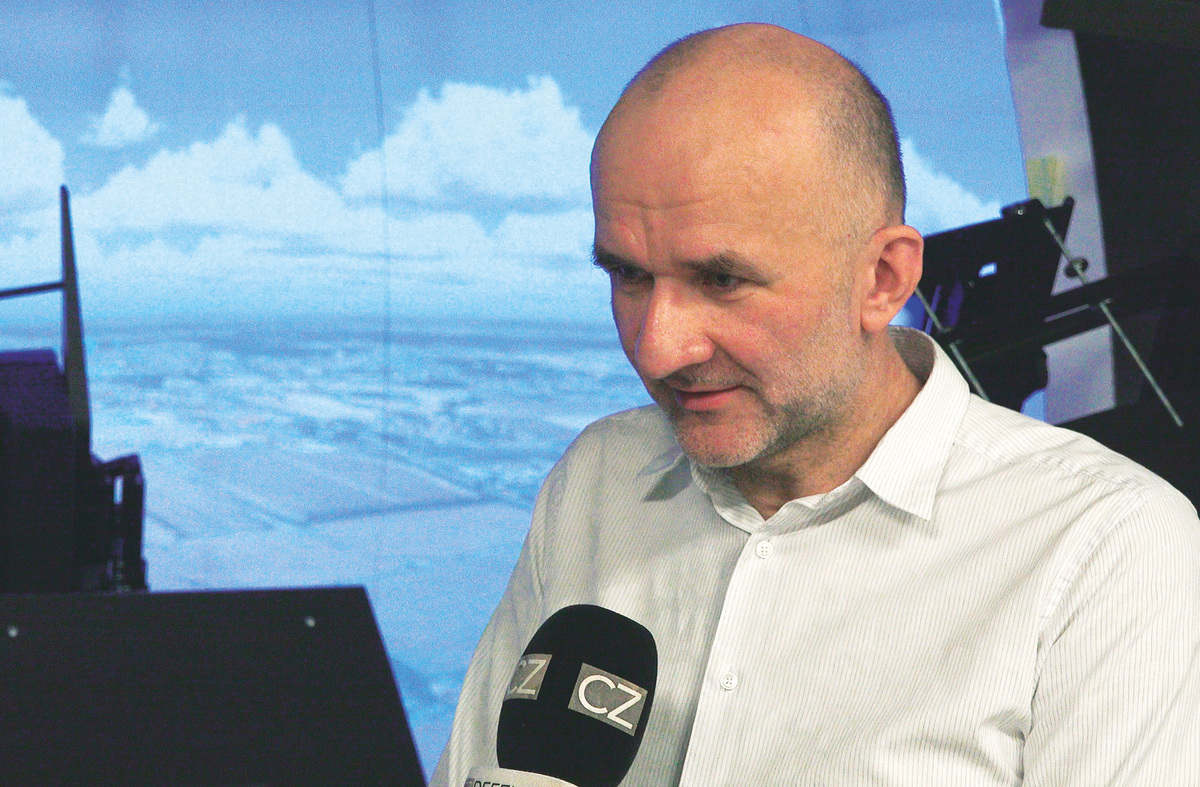
Of course, the company's vision is also to monitor new technologies and eventually implement them in its simulation systems. VR Group wants to further develop its portfolio, service support and life cycle support of the delivered simulation systems, which is very important according to Vít Ryška. On the modern battlefield, training and professionalism of personnel becomes a priority and VR Group is ready to assist customers in all aspects of achieving and maintaining the necessary skills.
